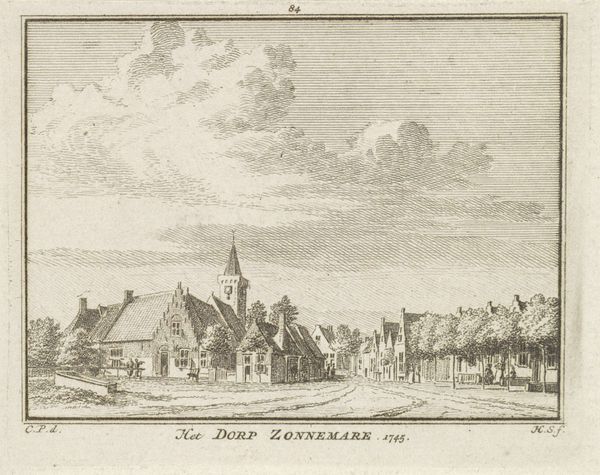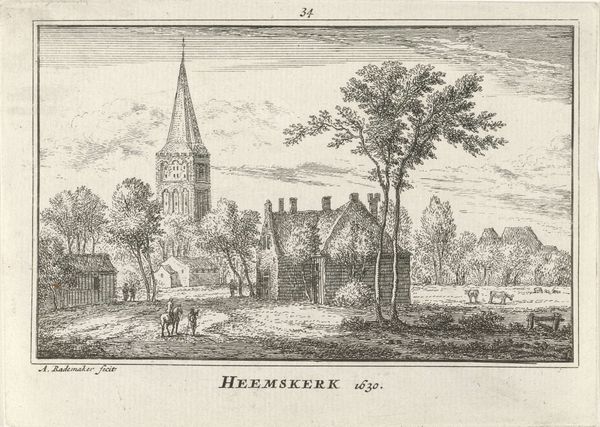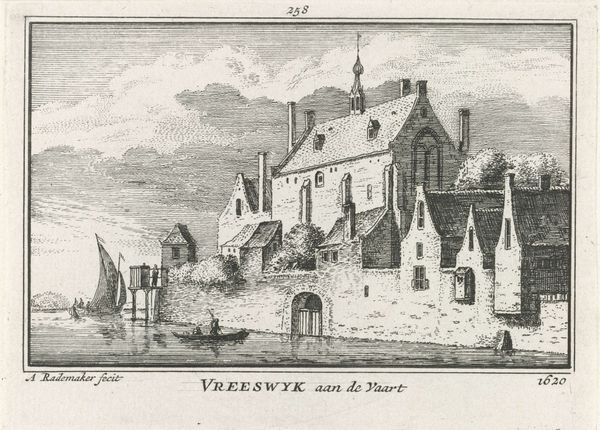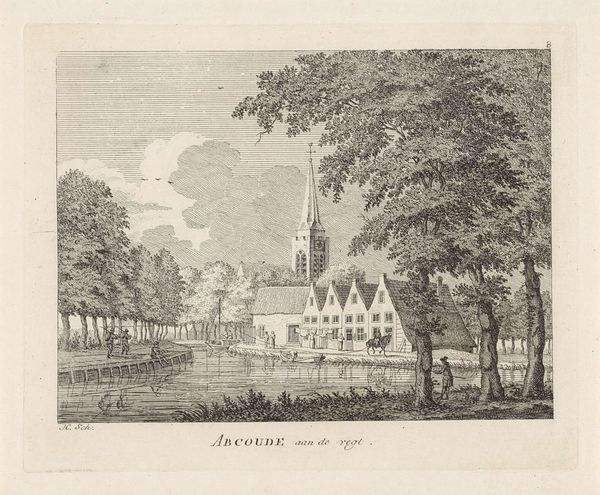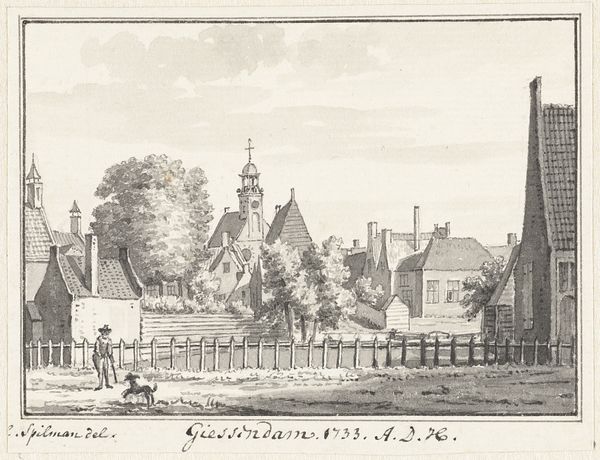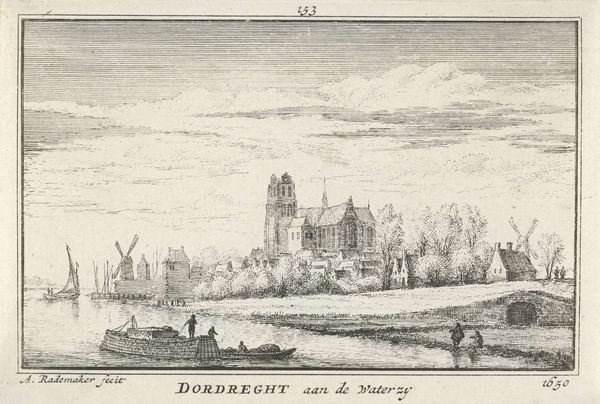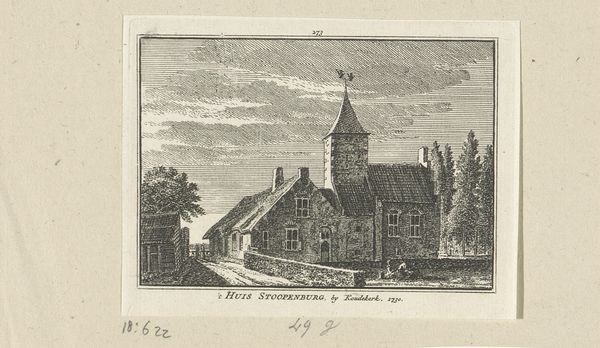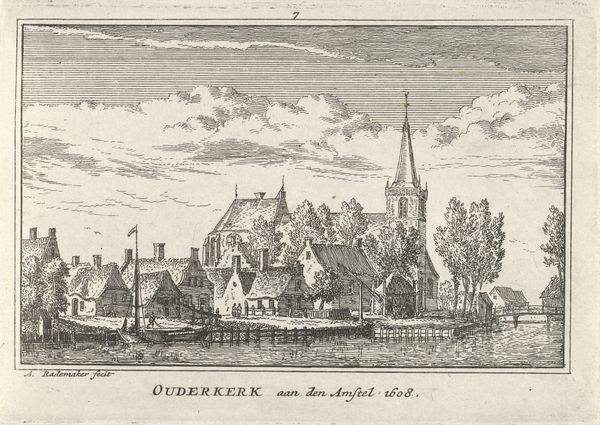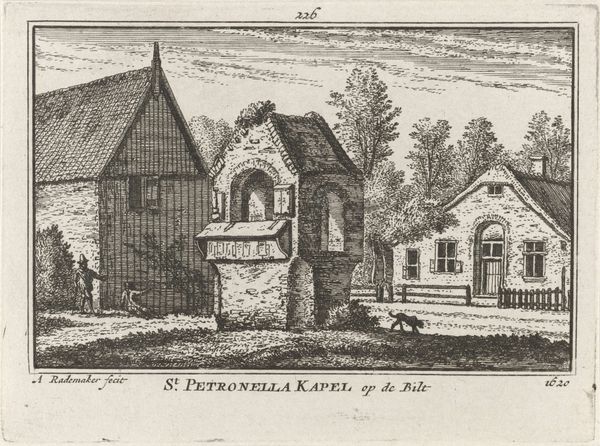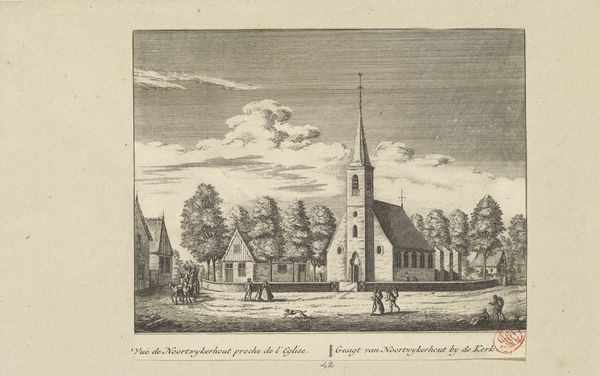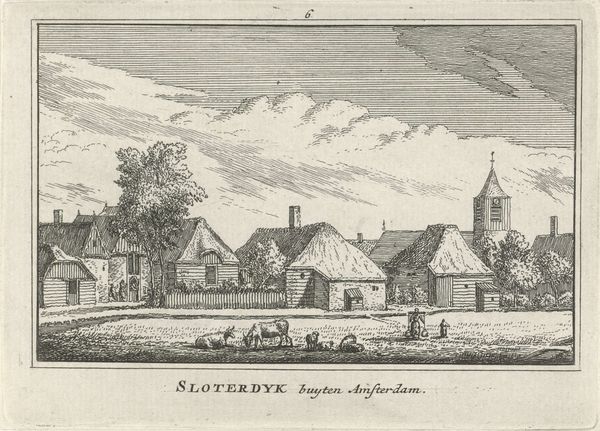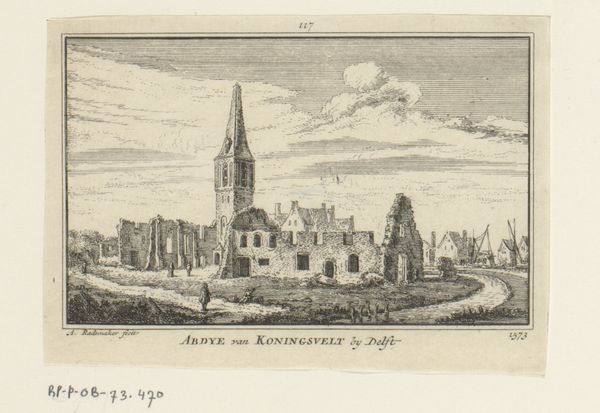
Gezicht op de Oude of Pelgrimvaderskerk te Delfshaven, 1570 1727 - 1733
0:00
0:00
print, etching, engraving, architecture
#
dutch-golden-age
# print
#
etching
#
old engraving style
#
line
#
cityscape
#
engraving
#
architecture
Dimensions: height 80 mm, width 115 mm
Copyright: Rijks Museum: Open Domain
Editor: Here we have "Gezicht op de Oude of Pelgrimvaderskerk te Delfshaven, 1570," or "View of the Old or Pilgrim Fathers Church in Delfshaven, 1570," by Abraham Rademaker, dating from 1727 to 1733. It's an etching/engraving. It has this quiet, almost stoic presence. What's your take on this piece? Curator: This engraving provides a fascinating glimpse into the visual culture of the Dutch Golden Age, or more accurately, a reimagining of it from a later period. Consider how Rademaker, nearly two centuries later, chooses to depict this historical scene. He's not simply recording architecture; he's participating in a historical dialogue. Do you see how the sharp lines and meticulous detail almost romanticize the past? Editor: I see what you mean. There's a clarity that almost feels... idealized? Why would an artist want to create a romanticized picture? Curator: Perhaps it was the rise of Dutch nationalism? Rademaker could have been trying to visualize the origins of Dutch culture, constructing a specific narrative around civic virtue and the importance of religion within the society, particularly considering the church's association with the Pilgrim Fathers. How do you see the composition contributing to that narrative? Editor: It is very centered on the church, so you notice that first and foremost. So it really establishes that it's not just any building; it is really calling out a church. I hadn't thought of the role that would play in creating a story. Curator: Exactly. The print serves not just as a historical record, but as a social tool to shape collective memory. And considering that these images would circulate widely, the impact could be substantial. I find how art creates public perceptions. Editor: I never thought about it that way, but you're right. Curator: I hadn’t fully considered the potential link to burgeoning nationalism at the time, but looking through this lens has given me fresh eyes and made me appreciate that Rademaker was shaping the world in his etching. Editor: This really makes me look at this piece, and other art, as cultural commentary. Thank you.
Comments
No comments
Be the first to comment and join the conversation on the ultimate creative platform.
